


St Mary Magdalene, Sandringham, interior. Left to right: (a) Nave, looking towards the chancel. (b) The chancel's stencilled hammerbeam roof. (c) East window with gleaming silver reredos, and altar frontal.
St Mary Magdalene, Sandringham, Norfolk, interior. This parish church, with its important late-Victorian additions by Sir Arthur Blomfield, is Grade II* listed largely because of its connection with the royal family, and its rich interior. As a result of the connection with Sandringham House, it contains craftsmanship of the highest contemporary standards, as well as many memorials to the royal family. Combining both aspects, the chancel roof and walls "are either painted or encrusted with rich decorative schemes ... almost all introduced after 1910 as a memorial to Edward VII" (Pevsner and Wilson 627). Under the IHS stencilled roof hover gilded angels with their hands joined in prayer; there are angels along the side too, where the transverse beams meet the brackets. Most of the angels around the east window hold coats of arms, while below them are royal or religious figures in gilded niches.
Fittings (a selection)


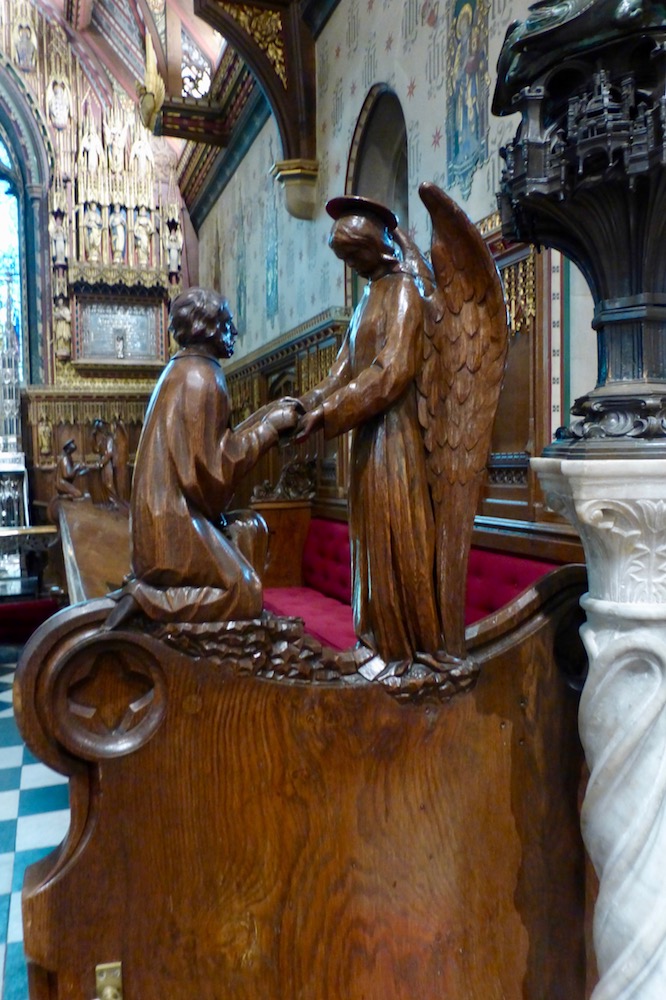
Left to right: (a) The choir stalls in this "angel choir" are from S. S. Teulon's restoration of 1857-58, and have fine carved ends. (b) The richly worked silver-fronted pulpit, crucifix, altar frontal and reredos. (c) Another choir-stall carving.
In keeping with the angels in the chancel decoration (and the angel over the south porch entrance), the Royal chancel pews have carvings at each end, all depicting angels from different episodes in the Bible: the one shown on the left above seems to be the angel, often pictured as holding a chalice, supporting Jesus in the Garden of Gethsemane. In the equivalent position on the other side, an angel is releasing Peter, whose hands have been bound, from his captivity by Herod (Acts 12, 6-7). The beautiful and intricately worked silver crucifix is a Spanish artefact of medieval origin, but the early twentieth-century silver (and oak) pulpit and altar were both by the silversmiths Barkentin & Krall, and the reredos was by William Tower of what was by then the firm of Kempe & Tower (see Pevsner and Wilson 627).
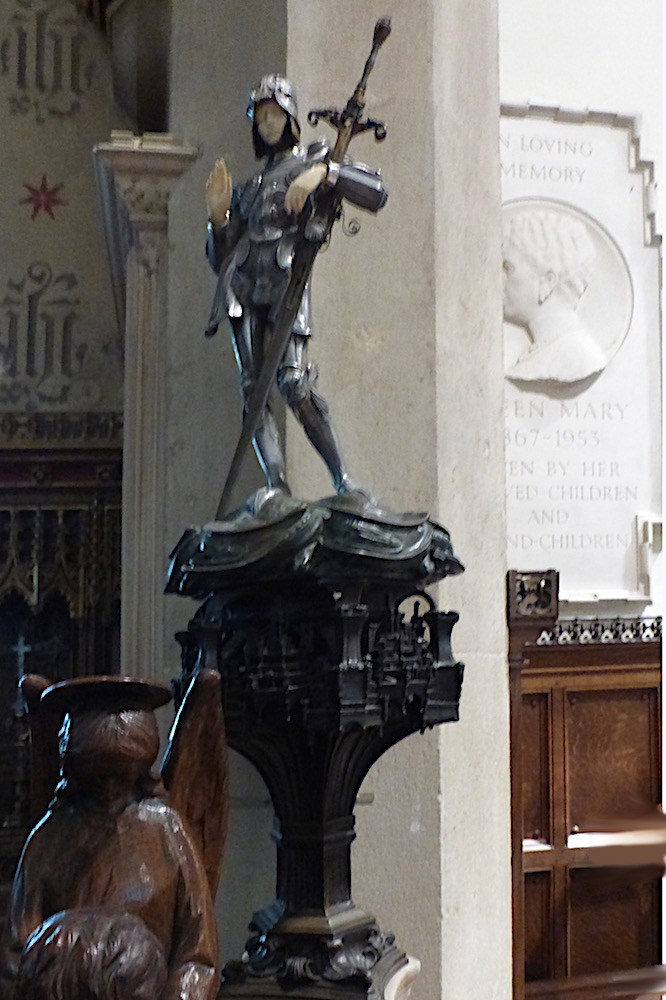
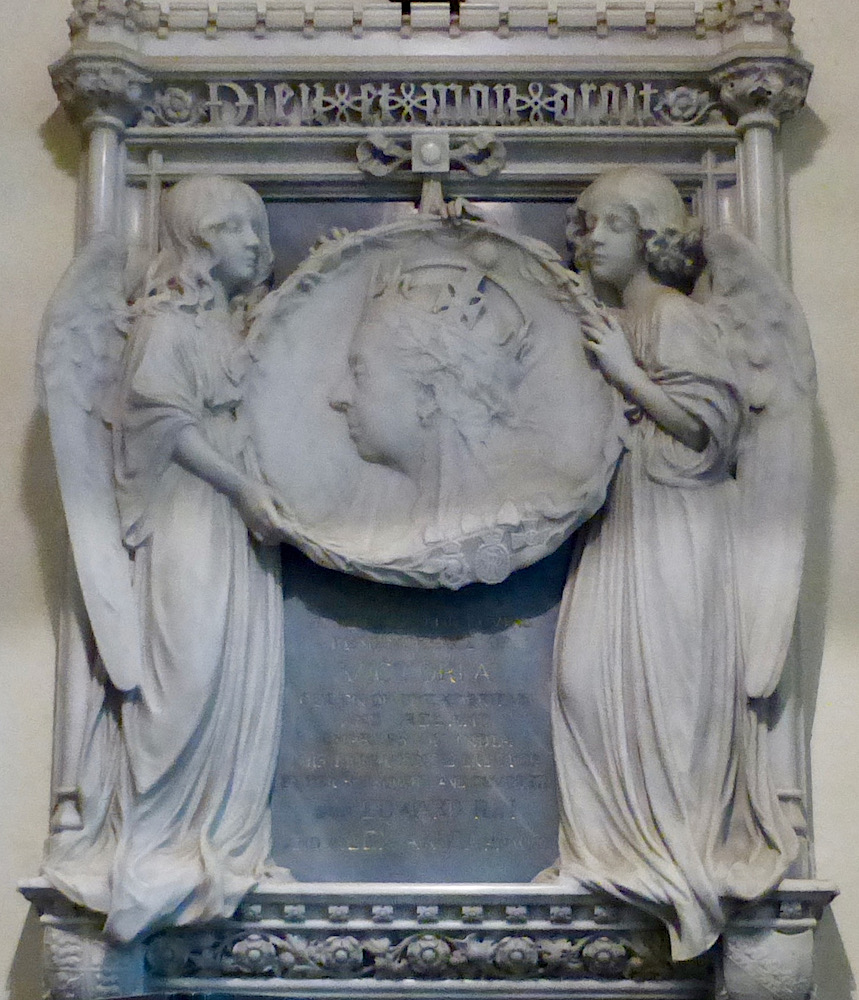
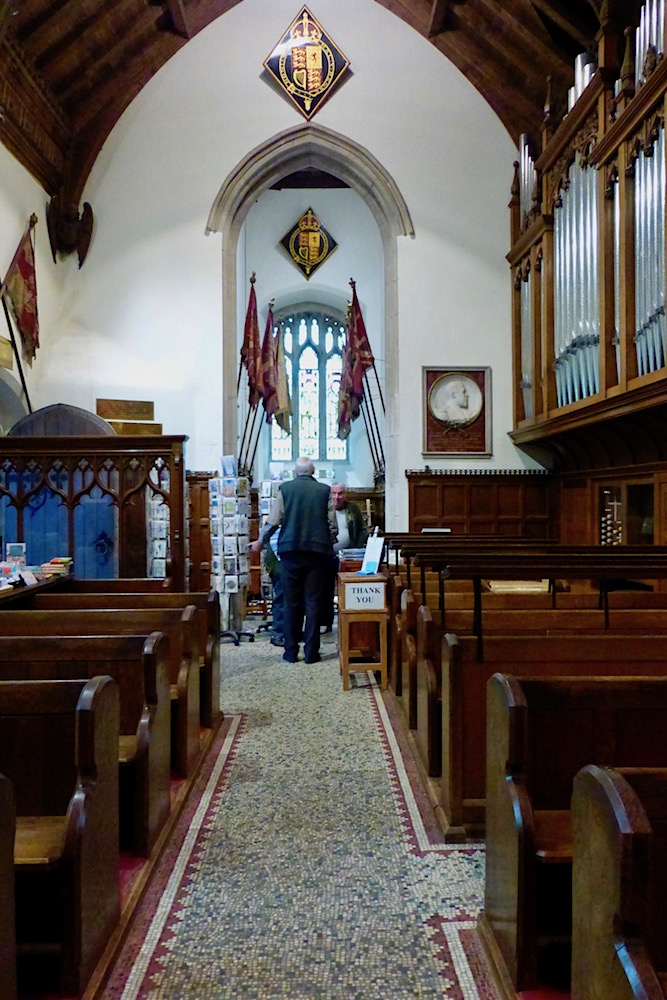
Left to right: (a) At the corner of the chancel, at the end of the royal pew, is a statuette of St George by the sculptor Sir Alfred Gilbert. (b) Memorial to Queen Victoria by an unknown sculptor. (c) Looking west towards the baptistry.
Sir Alfred Gilbert's statuette of St George is of aluminium with inset ivory, and dates from 1892. It was given by the Royal Household as a memorial to the Duke of Clarence, who died at the beginning of that year (Ashton 13). The marble memorial to Queen Victoria must date from the early twentieth century; its sculptor is unknown. Among the series of memorial roundels on the walls are at least two by William Reid Dick (the roundels of King George and Queen Mary, the latter just glimpsed to the right of St George). The organ, at the north-west end of the nave, was by John Walker & Co., and, according to Canon Ashton, it was Edward VII's last gift to the church, its lovely carved wooden case made to the designs of Blomfield himself (4).
Stained Glass (examples)
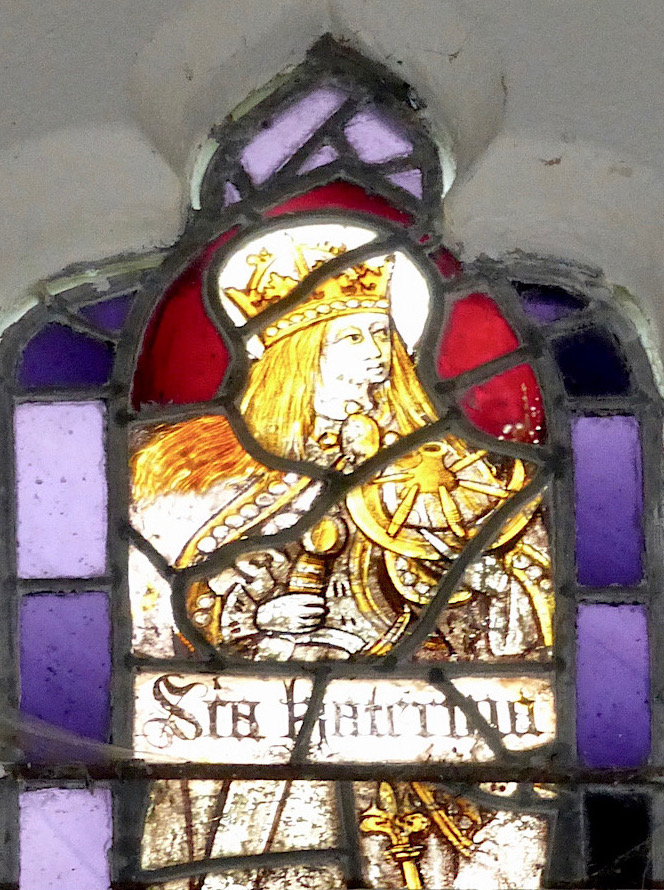



Left to right: (a) A fifteenth-century St (Katerina) Catherine with her wheel, in the south wall of the entrance porch — one of the church's oldest windows. (b) Stained glass window in the south transept, given by the sea-faring Prince Alfred in honour of his brother Edward's 50th birthday in 1891, by Heaton, Butler and Bayne. (c) Details from two different windows, in the east windows of the north aisle and the south chapel, which together show the four evangelists. These are St Mark and St Luke.
Some of the most precious items in the church — the altar, reredos and pulpit — were given by the Prince of Wales's wealthy American admirer, Rodman Wanamaker, as was the magnificent Spanish cross (Ashton 21). The stained glass window on the right, however, in the south transept, was given by the seafaring Prince Alfred in honour of his brother Edward's 50th birthday in 1891. It was by Heaton, Butler & Bayne (click on the image for more information). The window featuring St Luke has a brass plaque inscribed to the effect that the Queen herself presented it to the church at the end of 1891 — another royal commission of the same period — and its partner on the opposite side of the church, which lists about a dozen subscribers, was installed at the same time. Most probably this pair was also commissioned from Heaton, Butler and Bayne.
The church is understandably proud of its most historic stained glass, but it also has some good examples of Victorian glass installed after Blomfield's restoration. The east window, a traditional crucifixion scene by Tower, came a little later (1911).
Photographs and text by Jacqueline Banerjee. You may use these images without prior permission for any scholarly or educational purpose as long as you (1) credit the photographer and (2) link your document to this URL in a web document or cite the Victorian Web in a print one. Click on the images to enlarge them.
Related Material
- St Mary Magdalene: Exterior
- Stained glass window given by Prince Alfred
- The pulpit by Barkentin & Krall
- The altar by Barkentin & Krall
- Closer view of Sir Alfred Gilbert's St George
- St Mildred, Whippingham, the estate church for Osborne on the Isle of Wight
Bibliography
Ashton, Canon Patrick. The Church of St Mary Magdalene, Sandringham. Peterborough: Jarrold, 2008.
"Barkentin & Krall, Ltd. Mapping the Practice and Profession of Sculpture in Britain and Ireland, 1851-1951. Web. 9 October 2018.
"Church of St Mary Magdelene." British Listed Buildings. Web. 9 October 2018.
Pevsner, Nikolaus, and Bill Wilson. Norfolk 2: North-West and South (The Buildings of England). New Haven and London: Yale University Press, 2002.
Created 7 November 2016